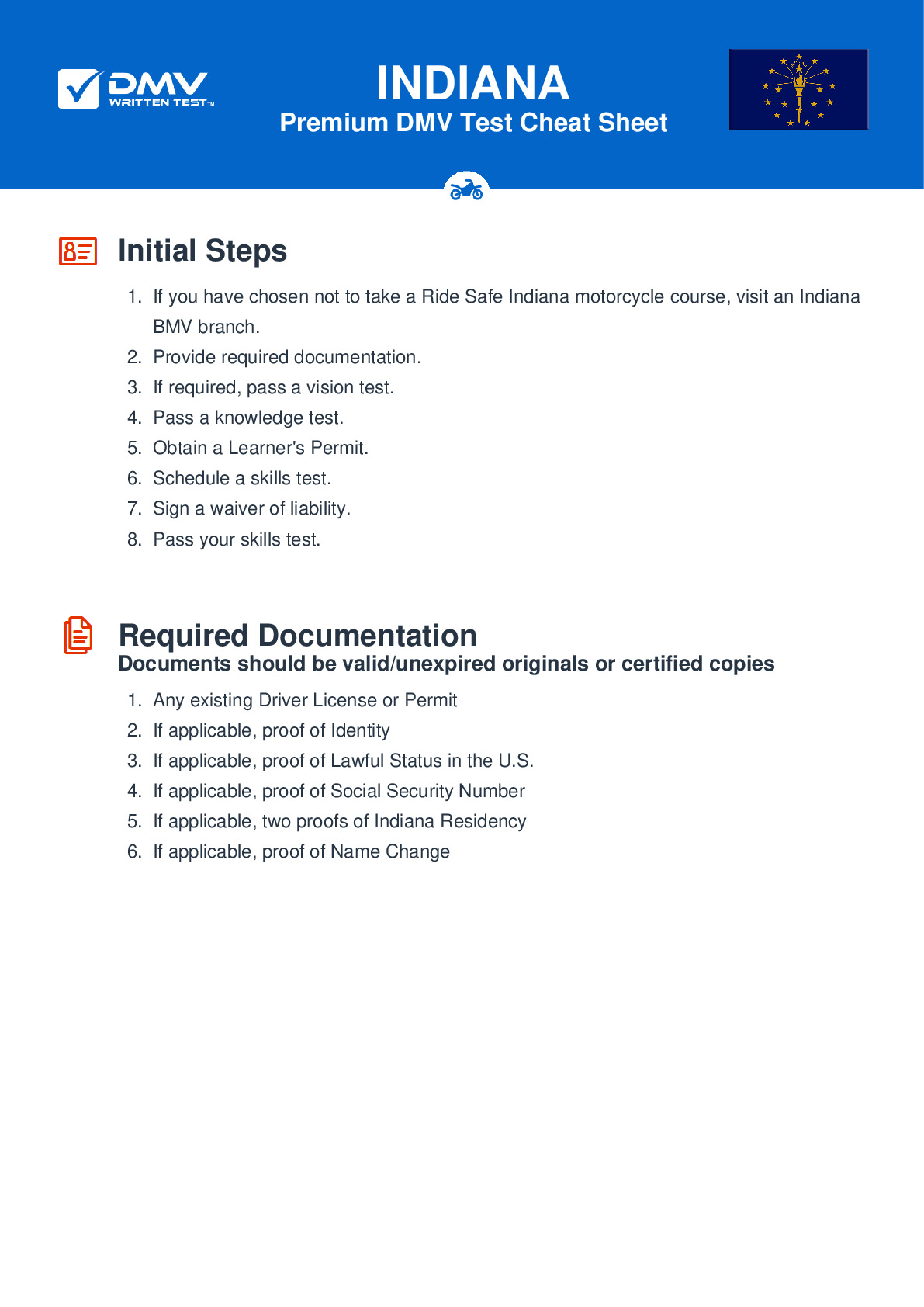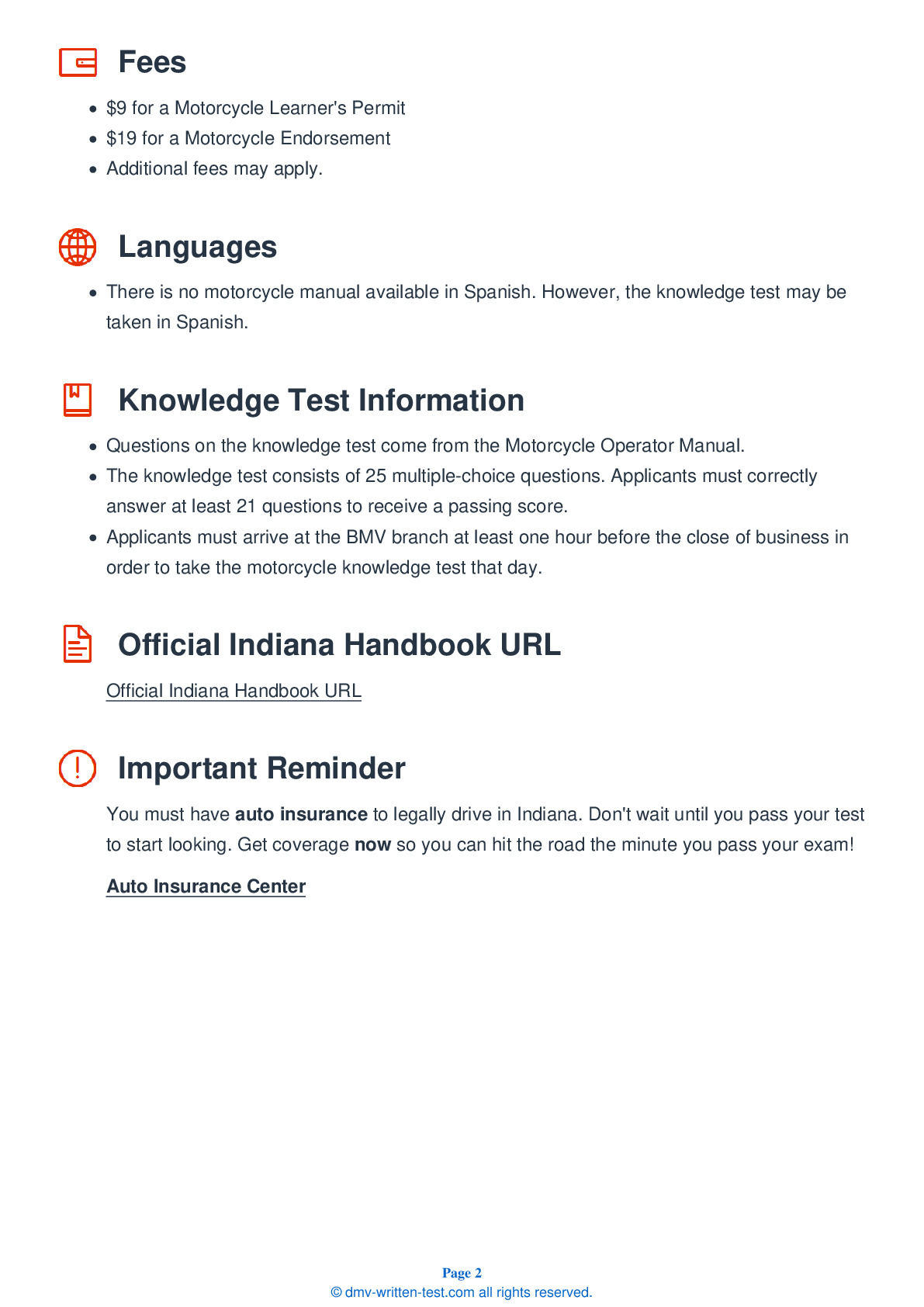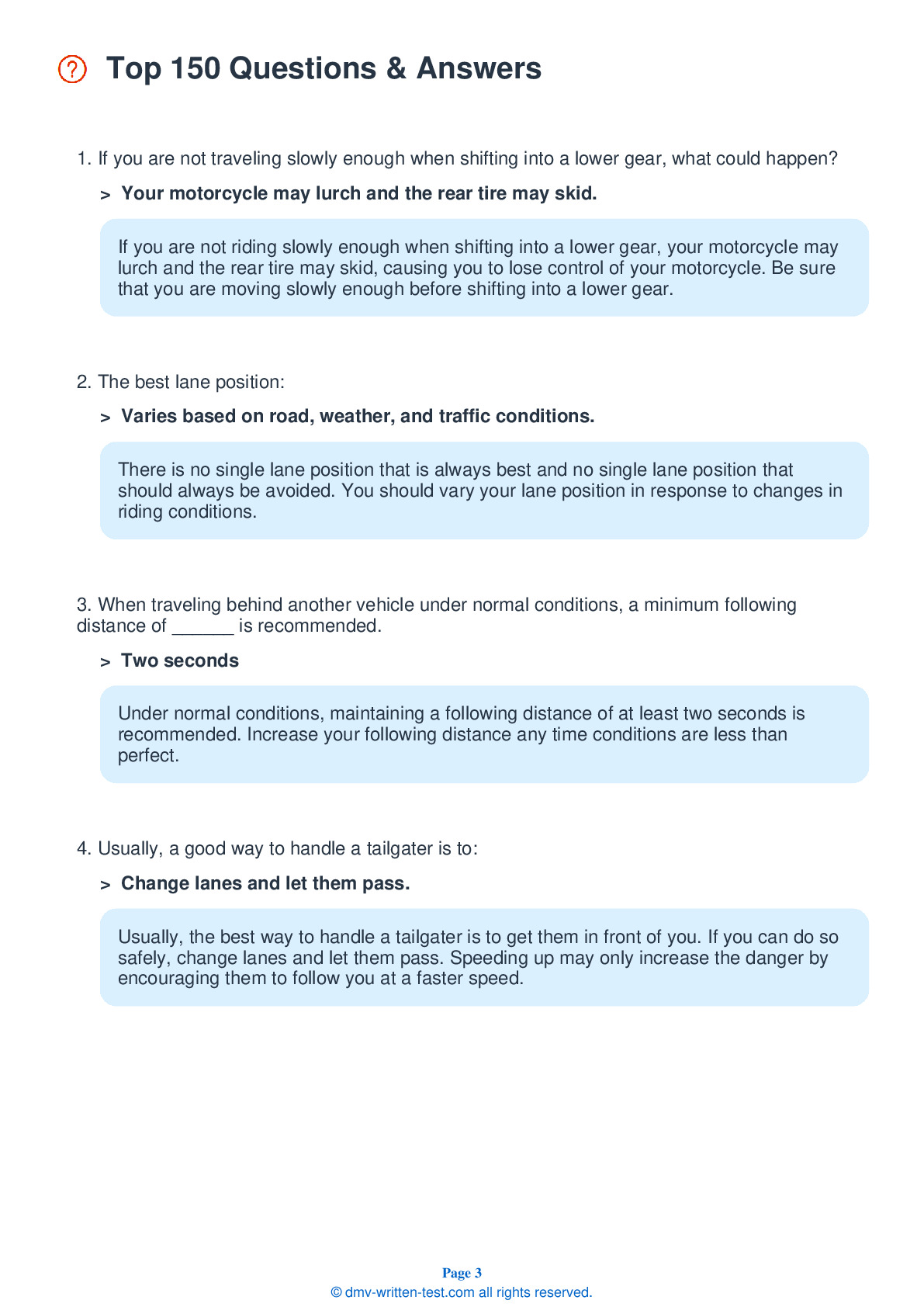2025 Indiana Motorcycle Permit Test 10
The following questions are from real DMV written motorcycle permit tests. These are some of the actual permit questions you will face in Indiana when getting your motorcycle learners permit. Each motorcycle theory practice test question has three answer choices. Select one answer for each question and select "grade this section." You can find this button at the bottom of the drivers license quiz. For a complete list of questions and answers for Indiana please visit https://cheat-sheets.dmv-written-test.com/en/indiana/motorcycle.
Number of Tests
Number of Question
Passing Score
1. Riding between two vehicles moving in the same direction:
Explanation
In Oregon, it is illegal for motorcycles and mopeds to pass between two moving vehicles on a multilane highway or one-way street.
2. When carrying a passenger, a motorcyclist should tell the passenger to:
Explanation
Even if your passenger is also a motorcyclist, you should give them complete safety instructions before leaving on a trip. Ask them to get on the motorcycle only after you have started the engine. They should sit as far forward as possible without crowding you and firmly hold onto your waist, hips, or belt. They should keep both feet on the footrests at all times, even when the bike is stopped.
3. Where is the clutch lever usually located?
Explanation
The clutch lever of a motorcycle is usually located on the left handgrip.
4. In general, riders should:
Explanation
Because road and traffic conditions are always changing, the safest lane position is also always changing. Choose the position that will maximize your space cushion and allow other drivers to see you most easily.
5. Since most crashes happen during daylight hours, you should:
Explanation
Most motorcycle crashes happen in broad daylight. You should always wear brightly-colored clothing when riding to maximize your chances of being seen, even during the day.
6. How do headache, cold, and hay fever medications usually affect your body?
Explanation




